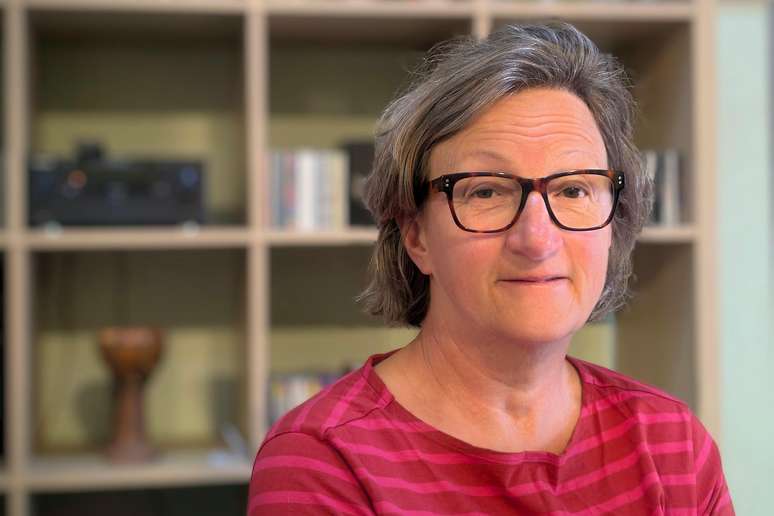Why is the number of autism diagnosis changing? And what does this mean for autistic people?
You may have seen videos on social networks: “Five signs that you can be autistic”. You may have heard of long waiting lines for diagnosis. Perhaps knowing – or hearing – that the number of people considered autistic is growing and fast.
There is a lot of time at stake. These numbers have very different meanings for different people. For some, autism is a fear (what happens if this happens to my son?); For others, it is an identity, perhaps even a superpower.
But, after all, what is the truth about the number of autistic people – and what does it really mean?
To say something, first you have to define what exactly is said.
For someone who receives the diagnosis of autism, it is necessary to present “persistent difficulties in social life and in the media”, says Ginny Russell, associate professor of psychiatry at the University College in London (UCL) and author of the book The rise of autism. Use the criteria of the diagnostic and statistical manual of mental disorders, known as DSM.
According to her, behaviors may vary from difficulty maintaining a conversation to the total absence of words.
A second group of criteria involves limited interests and repetitive behaviors. This includes “tightening the hand, swinging the body or hitting the skin, but also follow rigid routines, how to always eat the same food”, he explains.
The data
But what are the evidence that the most people adapt to these criteria today?
Russell conducted a study that analyzed the evolution of the diagnostic rates of autism in the United Kingdom for 20 years, on the basis of data of about 9 million patients recorded in general medicine clinics.
The research found eight times younger people’s diagnosis of autism in 2018 than in 1998. “It was a huge increase”, he says, “better described as an exponential”.
And this phenomenon is not exclusive to the United Kingdom. Although the data are missing in many parts of the world, Russell states that “in the countries of distinction and European in English where we have information, there is evident evidence that a similar increase in diagnostic rates occurred”.
But – and this is a crucial point – an increase in the number of diagnosis does not necessarily mean an increase in the number of autistic people.
Russell’s study and the other shows that there was, in fact, a great elevation in the diagnoses. That is, today there is more autism, at least from a statistical point of view. But is this growth due to an expansion of diagnostic criteria, not a true increase in the number of autistic people?
Why are the diagnoses increasing?
The definition of autism has not remained static. The first studies that described the disorder emerged in the 1930s and 1940s, according to Francesca Happé, professor of cognitive neuroscience at King’s College in London, who has studied the theme since 1988.
“The original descriptions spoke of children with great need for support, usually with a very late speech,” he says. “Some did not say anything. And the attention was, of course, in children, in particular the boys.”
This definition was expanded in the 90s, when Asperger’s syndrome was incorporated into diagnostic manuals. People with Asperger were considered in the autistic spectrum because they present social difficulties and repetitive behaviors, although they had a flowing language and retain intelligence.
The eight -time increase of the new diagnoses indicated by Russell includes the cases of Asperger, considered a specific type of autism.
Another category added to the manuals was the “invasive development disorder without another specific” (pdd-otrecitura), a sort of “umbrella diagnosis” which also contributed to the discharge in statistics.
Today, the manuals use the term autism spectrum disorder (ASD), which covers the cases previously classified as Asperger or PDD.
That is: the diagnostic network of autism has been launched wider.
Women and girls in the spectrum

A group that has been included more frequently in this expanded spectrum are women and girls.
Studies show that the increase in the number of diagnosis was much faster among the women who are male.
It is something that Sarah Hedrickx, who has participated in the diagnostic team of autism for over 15 years, observes in his work.
“At the beginning, practically all patients were men. Today, almost all the people I attend are women,” he says.
She herself received the diagnosis of adult autism and is the author of the book Women and girls in the spectrum of autism (Women and girls in the autistic spectrum).
Handrickx believes that the growth of the number of diagnostics reflects a sort of “accounts” after decades of invisibility of people like her.
Since autism has been seen mainly as a male disorder, many autistic girls have been diagnosed with mental health problems such as social anxiety, obsessive-compulsive disorder (DOC) or borderline personality disorder.
Thanks to an increase in research and publications such as Handrickx’s book, published for the first time in 2014, today there is a greater understanding of how autism is manifested in girls and women.
An important difference between the sexes, according to her, is that girls tend to be better in “masking” their autistic traits, that is, behaviors imitated by others to unite socially.
Diagnosis in adults
The growth in diagnoses was also much faster among adults than among children.
For Heddrickx, this shows another aspect of the expansion of the spectrum: it has included people with less need for support.
“We are talking about individuals without intellectual disabilities,” he says. “People with delays in development or language were diagnosed long before, since the signs were evident from childhood”.
There are data that confirm it. A study underlines that between 2000 and 2018, the new diagnoses of autism in people with intellectual disabilities have increased by 20%, while diagnoses in people without intellectual disabilities increased by 700%.
The “center of gravity” of autism has changed.
For Ellie Middleton, creator creator and autistic author with ADHD, this is positive.
At 27, he says that skeptics on the greatest diagnoses should actually ask themselves: “How do all these people spend so much time without diagnosis, without support and neglected?”

Middleton claims to have arrived a serious condition of mental suffering before diagnosis. “At 17, I took the maximum dose of antidepressants allowed for an adult,” he says. “I couldn’t be alone, I couldn’t leave the house.”
The diagnosis of autism three years ago helped her change her way of living and taking mental health better.
But other people worry about how autism is portrayed in the media and social networks.
The exhibition of celebrities can “Glamoro” Autism, says Venessa Swaby, also autistic and responsible for support groups for autistic children and their families, through the A2ndvoice organization.
In the meantime, families with non -verbal autistic children feel they are “forgotten”.
As the number of diagnosis increases, diversity also increases within the autistic community, which in turn generates tensions on who “has the right” at the end and meaning.

Environmental causes
The increase in statistics also feeds awareness – and this generates a cycle of feedback: more diagnosis, more people know, which leads to even more diagnosis.
Internet and social networks play a central role in this process, as well as speculations on the causes of growth.
The theories already denied, like the one that connected the triple viral vaccine (against measles, parotitis and rubella) to autism, still circulate. There are also those who believe that there is something in food, water or air that would cause more cases.
But, as we have seen, the data indicate that the increase in diagnoses is mainly due to an expansion of the definition of autism – and there is a solid research that shows that autism has a mostly genetic basis.
Is there evidence that environmental causes could have a role, even if small?
Russell studied research on possible environmental factors and found few who could explain part of the increase.
“There is a well -consolidated relationship between parents and autism,” he says. “The older are the parents, the more likely they are a autistic child, although the effect is small.”
He also cites evidence related to premature birth, infections during pregnancy and complications in childbirth.
But, according to her, it is important to put these factors in perspective.
“Honestly, I believe that the vast majority of the increase is due to what I call diagnostic culture,” he says. “Our conception of the disorder has changed – and it is what has caused growth.”
You can hear The curve of autism on the sounds of the BBC (in English).
Source: Terra
Ben Stock is a lifestyle journalist and author at Gossipify. He writes about topics such as health, wellness, travel, food and home decor. He provides practical advice and inspiration to improve well-being, keeps readers up to date with latest lifestyle news and trends, known for his engaging writing style, in-depth analysis and unique perspectives.








